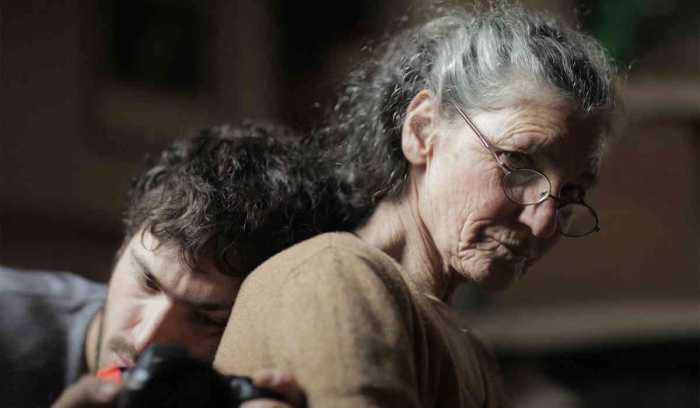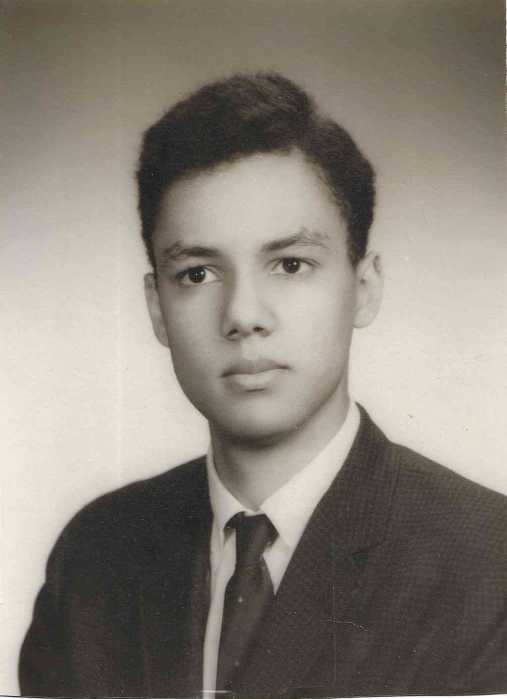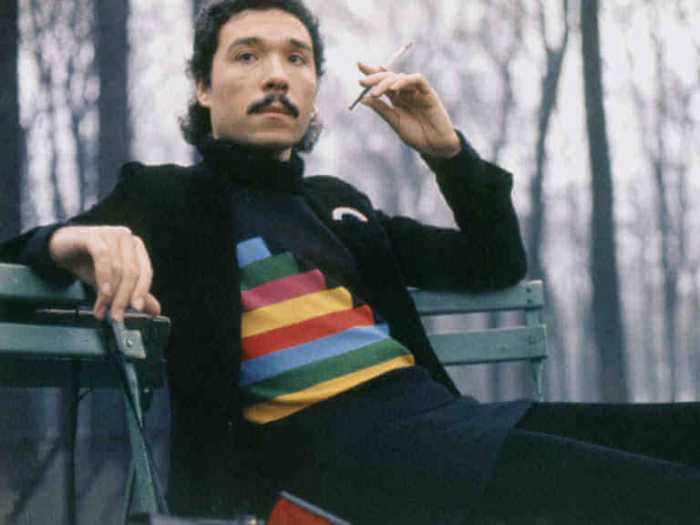Little Edie Beale and Lee Radziwill in Göran Hugo Olsson’s “That Summer.” | PETER BEARD
It all began as a news item that were it not for the parties involved would have merited little attention In the fall of 1971, the township of Georgica Pond, in Long Island’s East Hampton, became alarmed at the decrepit state of a summer home that appeared to be abandoned but was in fact occupied by a pair of reclusive woman: Edith Ewing Bouvier Beale and her daughter Edith Bouvier Beale. As the township discovered after a series of what the women called “raids,” the place was infested with fleas and overrun with stray cats and families of raccoons — who had destroyed large portions of the roof and siding. There was no running water or electricity, and overflowing garbage bags scattered about added to the overall ambiance of decay. What made this state of decrepitude even more outrageous was the fact that the Beales, who had lived there in isolation and increasing squalor for decades with limited funds, were the aunt and first cousin of none other than Jacqueline Bouvier Kennedy Onassis.
When Jackie O and her sister Lee Radziwill learned of this situation, they set about remedying it as best they could. The garbage was disposed of, the house was repainted, rewired, and tidied up and the Georgica Pond authorities placated. The story had, however, by that time attracted the attention of cinema vérité filmmakers Albert and David Maysles, whose illustrious career already included “What’s Happening: The Beatles in the U.S.A.” (1964), “Salesman” (1968), and “Gimme Shelter” (1970). “Grey Gardens” (1975) instantly became their most famous work.
While the Beales had retreated from the world like Miss Havisham in Dickens’ “Great Expectations,” through the Maysles they rushed to embrace it as never before. Speaking directly to the camera Big Edie (the mother) and Little Edie (the daughter) quickly ascended to the hallowed plateau of such voluble “reality” stars as Jason Holliday (Shirley Clarke’s “Portrait of Jason”), Ondine (Andy Warhol’s “The Chelsea Girls”), and Lance Loud (the PBS series “An American Family”).
Big and Little Edie’s world just before the Maysles brothers arrived
Little Edie was the dominant figure. Tall, elegantly posed, her head swathed in scarves to hide the alopecia that had rendered her bald, she spoke of her life past and present with offhand wit, derided the “mean Republican little town” that had invaded her home, and chatted amusingly with Big Edie — the two taking on the aspect of a mother-daughter vaudeville act of teasing and recrimination, but full of love. And then to add to all of this was “Jerry the gardener,” Jerry Torre, who worked at the Getty house in the same neighborhood and had discovered the Beales when he happened upon the house which he thought was empty. He quickly become a kind of adopted son or kid brother to the women. Then in his 20s, Jerry was the first of what became (thanks to the film) legions of gay men who fell under the Beales’ spell.
Why did the Beales become gay icons? That’s easy to see for anyone who understands that gayness has to do with a lot more than sex. The Beales are the understanding parent we wished we’d had — and for drag queens, style icons as well. Little Edie’s ability to create makeshift original outfits using pantyhose shawls and scarves is remarkable and striking. Moreover, her attitude, mixing a determination to take on the world with a soupcon of fear for daring to do so, is something all LGBTQ folks can well understand and identify with.
Adding to it all is the setting. The house was called Grey Gardens because of the color of the dunes, the cement garden walls, and the sea mist. It was designed in 1897 by Joseph Greenleaf Thorpe and purchased in 1923 by Big Edie and her husband Phelan Beale. While the Maysles films alludes to this past, it remains in the present. This left the door open for subsequent manifestations of the story: principally a Broadway musical and an HBO docu-drama.
The musical “Grey Gardens,” with book by Doug Wright, music by Scott Frankel, and lyrics by Michael Korie, starred Christine Ebersole and Mary Louis Wilson as the Edies. It premiered at Playwrights Horizon in New York in February 2006, re-opening on Broadway in November of that year, and was included in more than 25 “Best of 2006” lists in newspapers and magazines. The production won a Tony Award for Best Costume Design, and Ebersole and Wilson each won Tonys for their performances. Running for a year, it was the first musical on Broadway ever to be adapted from a documentary, wittily sporting an overall tone of dry wit very much in keeping with that of its subjects.
2009 brought the HBO film starring Drew Barrymore and Jessica Lange as the Edies. Directed and co-written (with Canadian writer-director Patricia Rozema) by filmmaker Michael Sucsy, it won six Primetime Emmy awards and two Golden Globes. Part of the reason for this is that it was able to full explore the “backstory” the Maysles film couldn’t, flashing back and forth between Little Edie’s life as a young woman, the actual filming, and the premiere of the documentary at the 1975 New York Film Festival.
That premiere was a signal moment in the Beale saga as Little Edie was there, standing up in the celebrity box, her arms filled with flowers which she happily tossed to the moviegoers below. As she was always complaining in the film of how much she was longing to “get away,” this premiere appearance supplied a real life “happy ending.” Edie then went on to do a nightclub act of her own devising at Reno Sweeney and led an otherwise lively existence in New York and later Florida until her death in 2002. Big Edie had preceded her in 1977 — having lived just a year more after the Maysles’ film’s release.
In 2006, Maysles made available previously unreleased footage for a special two-disc DVD edition for the Criterion Collection including a new feature titled “The Beales of Grey Gardens” assembled out of additional footage. It received a limited theatrical release, as well.
Then in 2011 came “The Marble Faun of Grey Gardens” by Jason Hay and Steve Pelizza, showing Jerry Torre’s life before, during, and after his time with the Beales. We learn how the mistreatment of this gay boy by his homophobic stepfather was healed by the Beales, as well as about his travels throughout the world (he lived for a time in Saudi Arabia), his post-Beale career as a New York City cab driver, and his work as a sculptor.
And now in answer to a culture’s insatiable thirst for all things Beale (that even a tribute song by Rufus Wainwright couldn't slake) comes “That Summer.” Directed by Göran Hugo Olsson, it’s nothing less than a prequel to “Grey Gardens.” The footage supplied for it was shot by artist, photographer, supermodel wrangler, and African explorer Peter Beard at the request of his friend Lee Radziwill, who was planning to make a film about the Bouvier family. Learning that the Edies knew about the Bouviers like no one else, she went with Beard to meet them, discovered the genteel squalor of their lives, helped them out, and more or less fell down the rabbit hole of their all-enveloping, utterly bewitching lives.
In “That Summer,” we see footage of other East End summer people —Radziwill, Truman Capote, Andy Warhol, Paul Morrissey, and their pals (even including a shot of Joe Dallesandro.) But it’s the Edies who dominate, chattering away in what’s clearly a warm-up for the Main Event captured not long afterwards by the Maysleses.
It’s a lovely film and requite viewing for Edie-o-philes. And above all, it brings to mind Little Edie’s most frequently noted mot juste: “Sometimes it’s hard to tell the past from the present.” With the Beales, that’s true. But like Proust’s madeleine, they spark one’s own memories of life —particularly for those of us approaching or well into middle age. As L.P. Hartley said in the opening lines of his novel “The Go-Between, “The past is a foreign country. They do things differently there.” But not so different that we can’t connect with women as eternally vibrant as the Edie Beales, Little and Big.
THAT SUMMER | Directed by Göran Hugo Olsson | Sundance Selects | IFC Center, 323 Sixth Ave. at W. Third St. | ifccenter.com



































